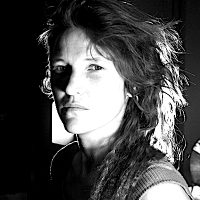View this post on Instagram
The relationship between art and activism has been discussed a lot over the years, some even stating that it is the artist’s responsibility to speak politically.
“In times of dread, artists must never choose to remain silent.” ~ Toni Morrison
Art has many resources to employ. Whether through music, dance, literature, or theater, storytelling has implemented satire, parody, and poetry to show us the irony of our ways or cause us to shed tears of failure and success. Modern and contemporary artists have used imagery and symbolism to process and affect. Regardless of the medium, humans seek out art, both as the maker and as the patron, to learn, grow, and heal.
Black Lives Matter
In terms of Black Lives Matter’s current movement, before I could even think about where activism stood with my art, I had to put the anti-racism work into my daily and weekly schedule. I have always loved a good protest—my punk ethos feels right at home yelling at the man. I read and stay abreast of the awful sh*t that humans do to each other; I cry, post about it, sign petitions and sometimes call a representative about it.
But now, I have decided to set aside time to keep my city councilmen, mayor, governor, and all those who claim they are here to serve us, on the hot seat—daily. It has to be as important as posting on Instagram to promote my business. And at the same time, I have to dig deep to root out my own personal racism, which is actually the most important part.
I have to be conscious of where my biases are playing into the systematic oppression of people of color and transform my behavior.
Reflections of the Artist
Personally, I have been re-reminded of how white supremacy has made itself a “norm.” It has not only colonized lands, but it has colonized our collective minds—our aesthetics, our spiritualities, our histories, and our cultures.
There is the layer of white supremacy tied to capitalism and consumerism, and when placed in terms of an artist—where your product is tied directly to yourself—how can we be artists if we conform to a biased perception of “normal?”
Seeing euro-whiteness as the “norm” limits our creativity as artists and shelters our minds as an audience. Activism, as an artist, is the eradication of limitations and the liberation of our individual voices. It can be seen through our various quality of movement styles, stories, and diverse experiences. We should be supporting the individual artist, the individual voice, not a preconceived product.
As artists, the further we strive to release these “norms,” the closer we will be to telling our own stories. The relationship of activism to art is the creation of the artist itself.
In some ways, this may just sound like an argument for inclusion, but I think it goes deeper than that in a few ways. On the one hand, each artist, each voice, each story is multi-layered, and that complexity within the individual artist can expand our collective consciousness. We grow as a human community when we see, hear, and ingest the experiences of others. As artists, we shouldn’t be in the business of giving the audience what they want, but rather push their perspective of what is.
Also, we cannot lock people of color into a caricature of their presumed culture. Playing into stereotypes and bias even for satire and parody has lost much of its resonance. But it’s far worse to typecast for fear of offending narrow-minded whiteness. Neither can we assume white “norms” are exclusively white—high art and folk art is separated by culture.
Contemporary metaphysics and the avant-garde is robustly human. Neoteric artists of all races will define our future from their own unique lens. Art in activism has the ability to amplify our collective mental and spiritual functions. But only when we nurture our own intricacies as artists and impel our audiences to appreciate the multiplicity of humanness.
 Share on bsky
Share on bsky


Read 1 comment and reply